A noble man’s court suit from the 1560s, with fashionable horizontal stripes.
It had been some time since I’d made my husband Nico a court outfit, and a big overseas event provided the incentive to make something new.
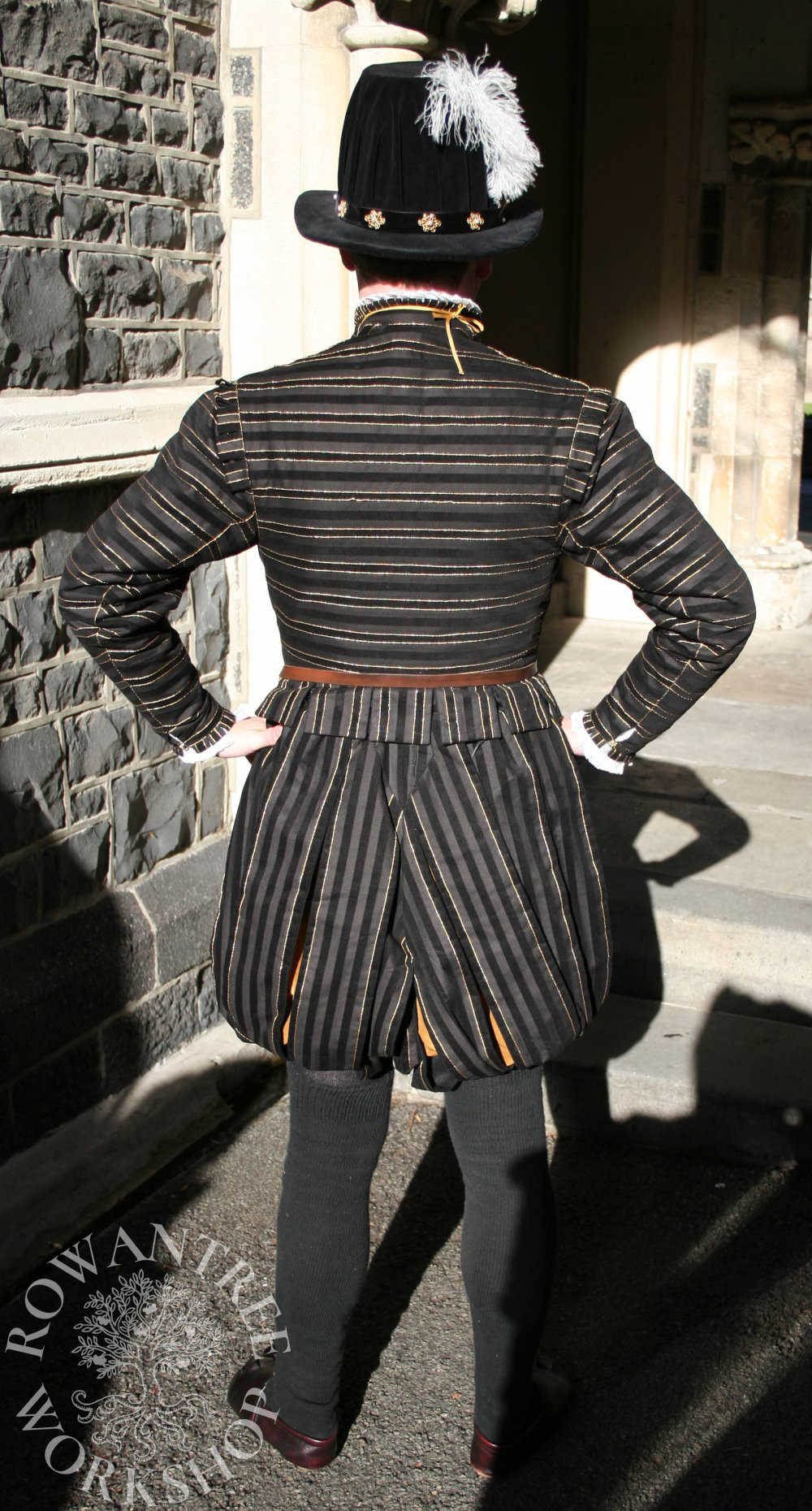
Research and Design
The inspiration for the suit came from the painting by Don Carlos and the drawings of the extant garments, detailed in Patterns of Fashion 3 (Arnold 1985). Suits with very similar cut and decorative styles can be seen in noble portraits of the time, including these examples by Coello and Boeckel.
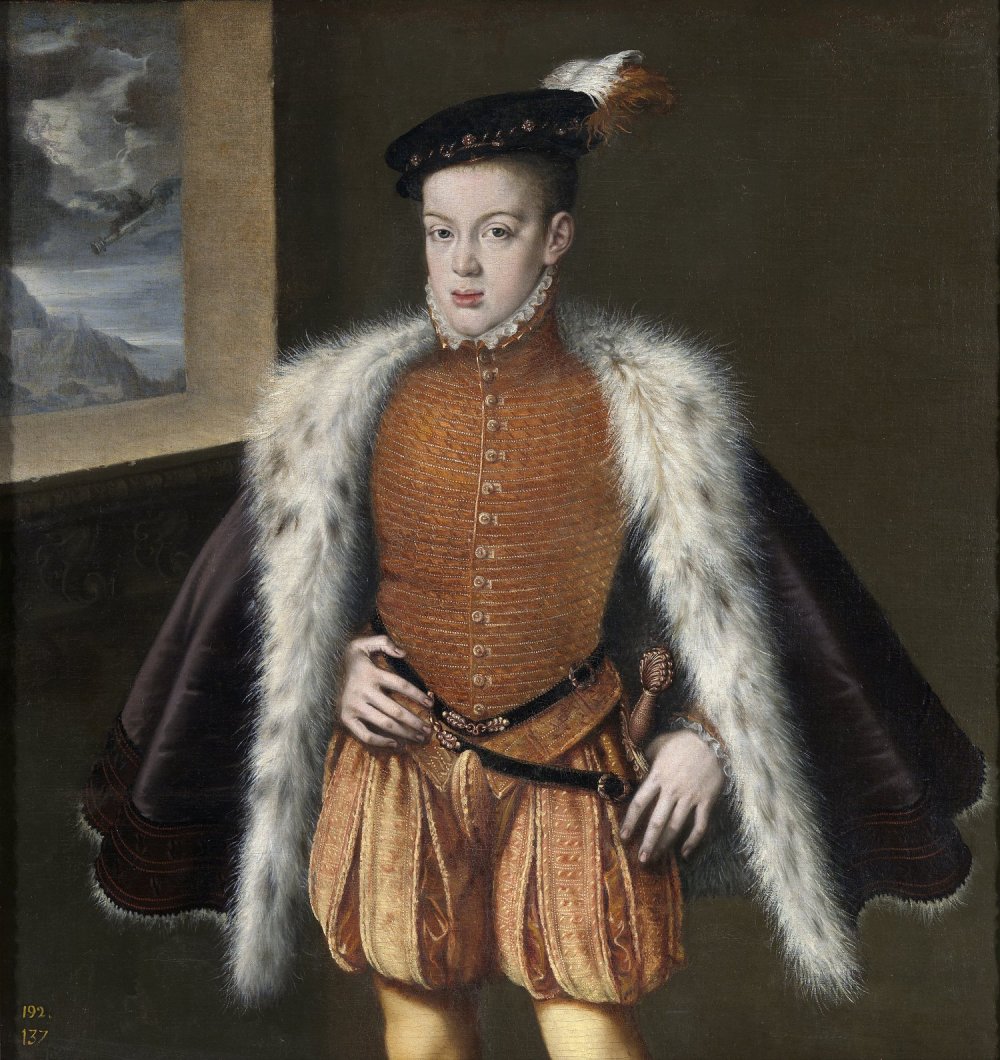

Source: Wikipedia

The doublets are of similar slim cut, with a high neck and dropped front waist but without the padded peascod belly of later styles. The horizontal stripes of gold cord are clearly high fashion, along with the many small buttons. The breeches have many panes, also with applied gold, with the satin lining beneath.
Spotlight had black fabric with stripes of velvet and plain weave and although cotton rather than silk, the overall effect was ideal for this project. After much searching, I found some lovely gold coloured silk taffeta for the puffs, and a trip to Greenfields resulted in a bulk bag of small gold buttons with a rose design at bargain price.
Construction
I based the pattern on the one in had developed for the red silk suit, but replaced the doublet skirts with tabs. I also changed the sleeve, rotating the seam (back to the correct position!) and expanding the sleeve head for a fuller, slightly gathered look.



I cut the bodice pieces from the cotton velvet, being careful to match stripes on the side seams. I cut the shoulder, waist and cuff tabs as long strips, to save time.
An estimate of how much gold twist I would need looked like 2 x 50m rolls I had should be enough. I tested several different ways of laying the gold – couching by hand was the nicest, but would just take too long. In the end, I applied it by machine, using clear nylon thread and a narrow zig-zag.
I sewed the gold twist on every second stripe on the doublet and sleeves, and down the edges of the tabs. Part way through, I ran out of gold twist – luckily a friend came to my rescue with a matching 50m roll.
I sewed the bodice pieces together, matching stripes and laying another line of gold into the seams.
I sewed the bases and sleeves to the doublet, then made up a lining in black heavy cotton twill for the body and lighter cotton for the sleeves, then bag-lined it.
I machined the buttonholes, carefully spaced between the velvet stripes. I made up a lacing strip using metal eyelets and whipped this into the waist seam, then sewed on the buttons along the front edge to complete the doublet.
Trunkhose
I used same pattern as the one I’d made for the red silk suit, but added a foundation to solve the leg-drop problem. I had made a pattern based on the Svante Sture pluderhosen detailed in Janet Arnold’s Patterns of Fashion 3 (Arnold 1985) and thought this might work for a foundation.
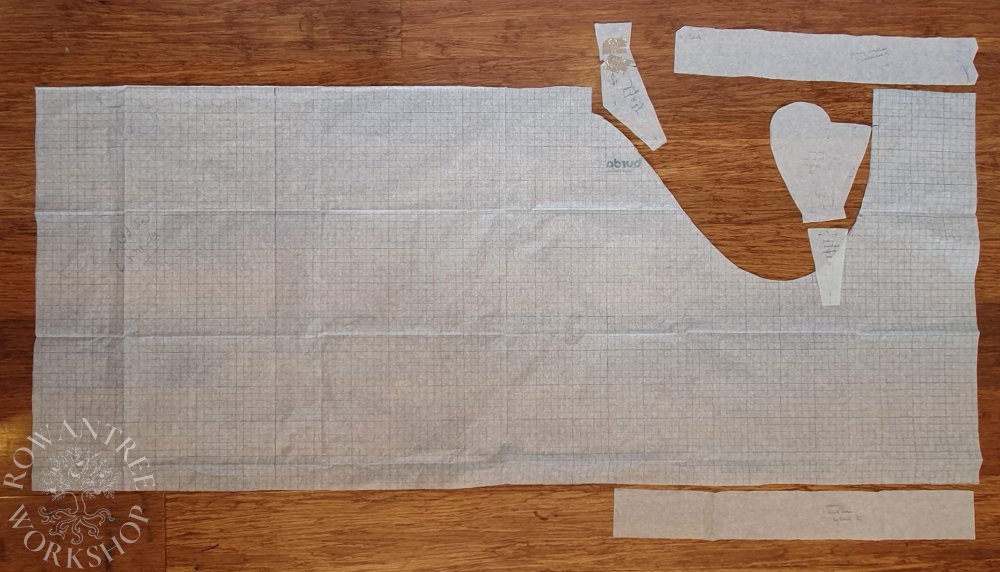
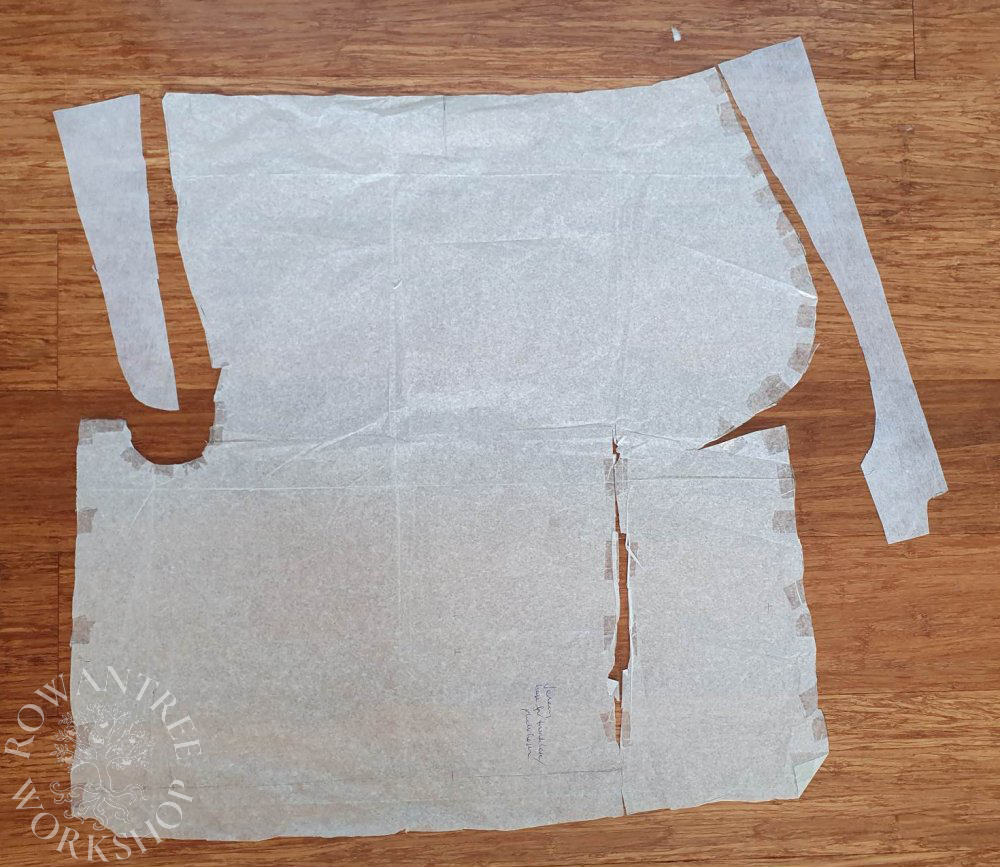
I followed the same construction process as with the red silk suit – gathering the lining into the waistband and cuffs, finishing the panes and pleating them in, then sewing in the crotch gusset and codpiece.


Then I made up the foundation in grey linen (I had a lot of it) and slip-stitched this in at the waist, crotch and cuffs.
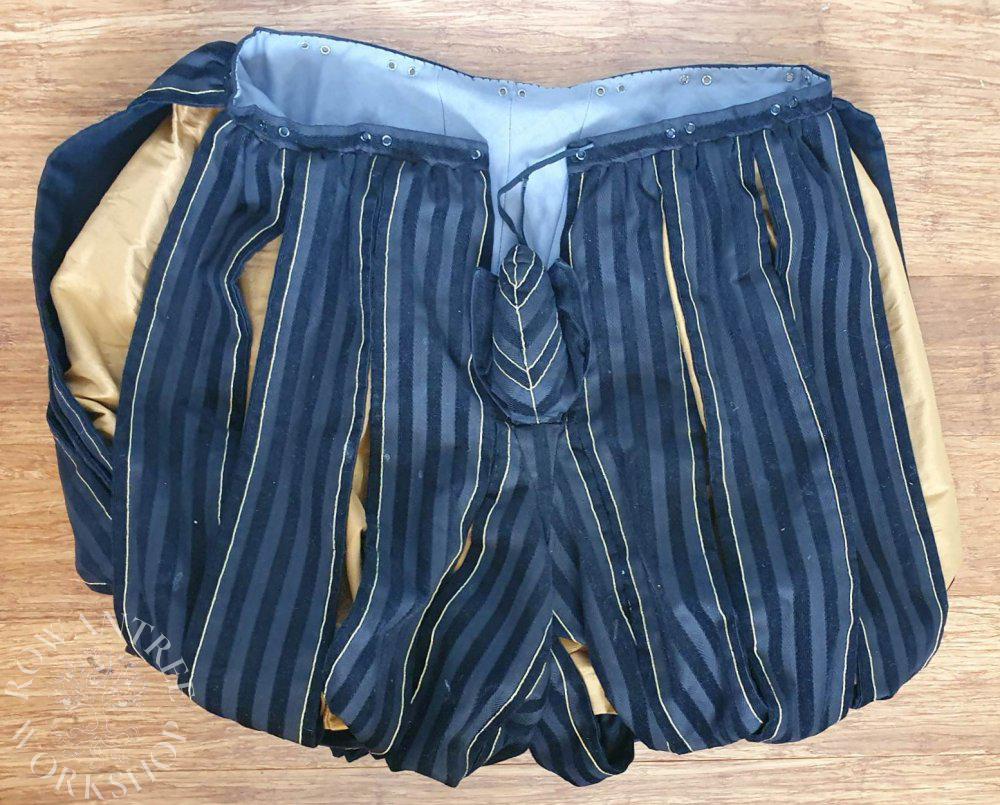
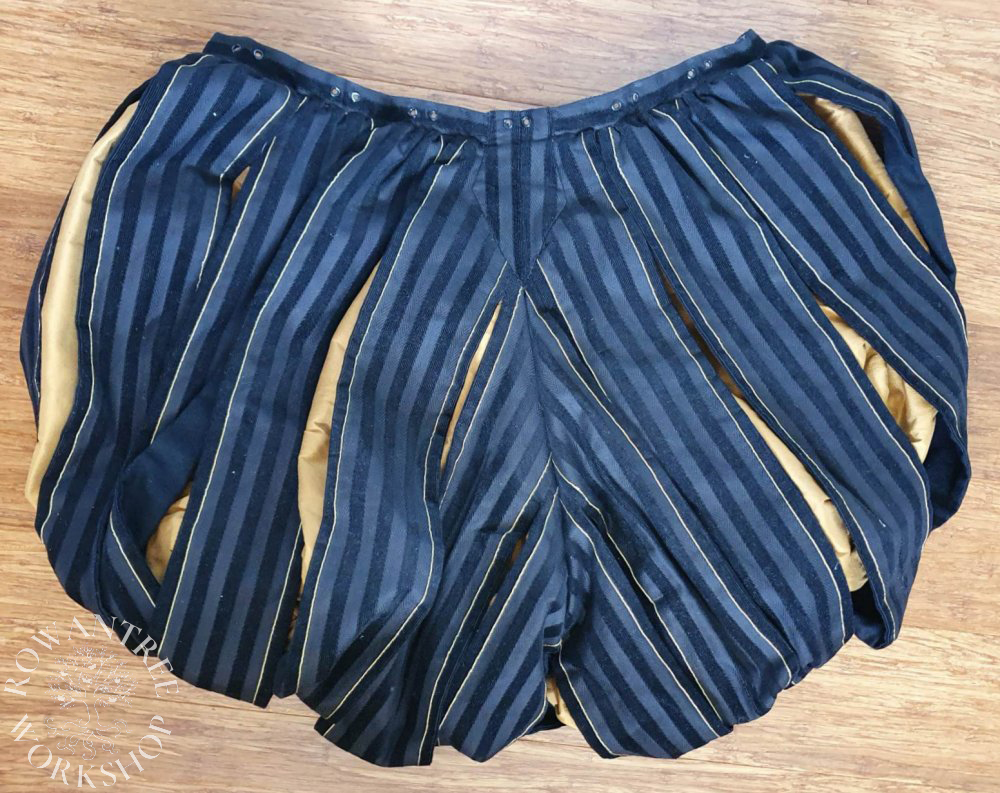
For amusement, I added a small squeaky toy to the stuffing in the codpiece 🙂
The suit worked really well, and I made a black hat and black wool coat to complete the outfit.

Photo: Robyn Spencer

Afterthoughts
As with the red silk suit, I would use some different construction techniques now, such as slipped linings, handsewn eyelets and buttonholes. And I would have based the foundation on one of the leather foundations detailed in Patterns of Fashion 3. (The Pluderhosen shape did work, but it could be better).

